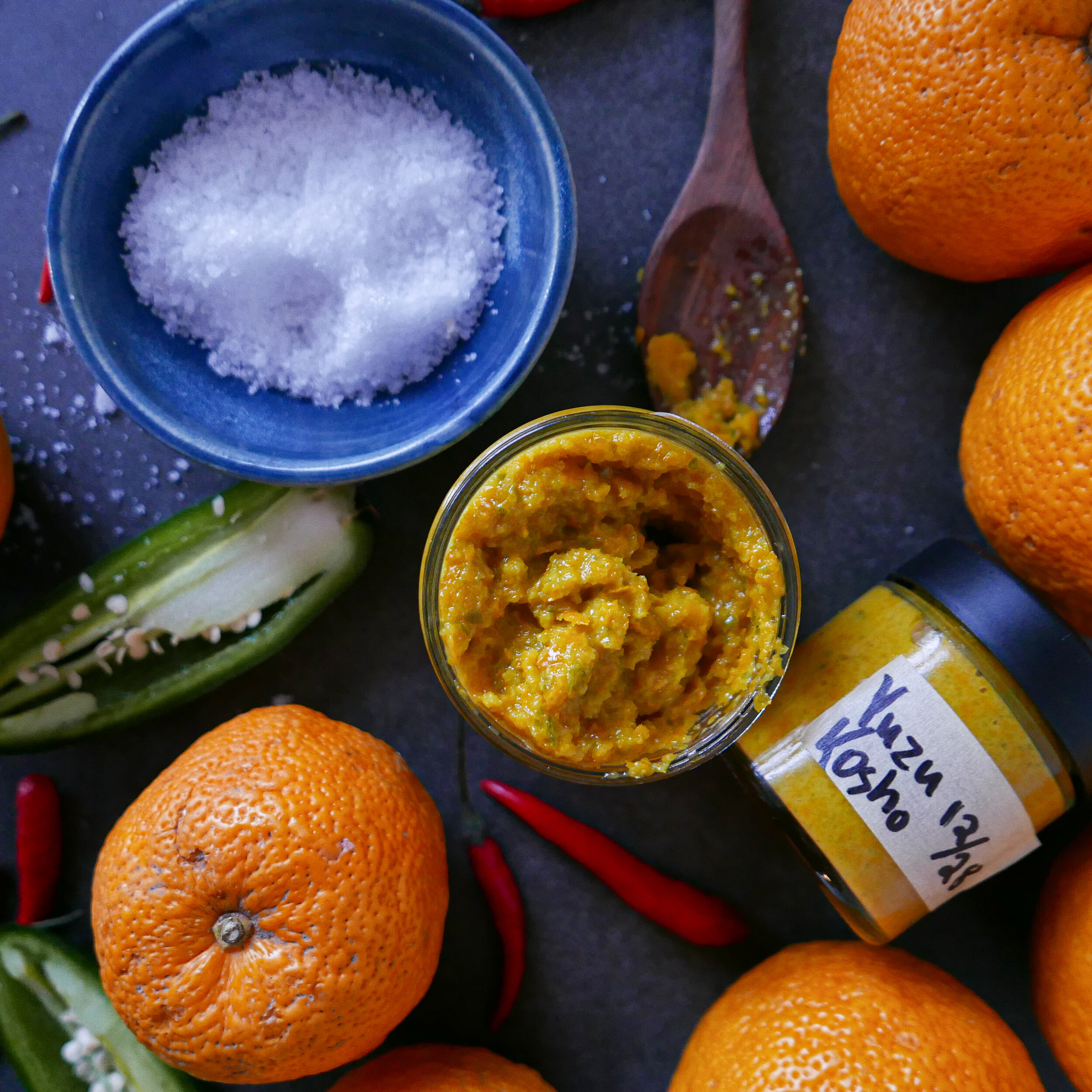yuzu kosho
Yuzu Kosho is a Japanese condiment I make religiously each citrus season. When I’m cooking for others it’s my “silver bullet” ingredient, and when I’m cooking drab meals for myself on an uninspired night, it becomes my savior. Yuzu fruit is a Japanese citrus that’s somewhat tough to come by in the states. Ask citrus growers at your farmer’s market if they have any or poke around in Japanese grocery store come winter. If and when you can’t find fresh Yuzu citrus, I suggest making a blend of citrus that’s representative of what’s available around you. I’ve had good luck with a blend of Meyer lemon, tangerine, grapefruit and lime zests.
So what do you do with this stuff? Kosho freaks will exclaim, “EVERYTHING!” and I almost agree. My all time favorite use (and maybe one of my “signature” combos) is mixing it with a robust EVOO to make a sauce for grilled or braised beef. It’s great with big flavors like roasted cabbage and other veggies, broiled fish, hearty bowls of noodles, fish tacos, grilled poultry, mixed in to marinades, etc. Be aware that it is tart, spicy and salty all at once. A little goes a long way and it can easily overpower a dish, so cuidado plz!
Through research and what I experienced in two weeks of winter in Tokyo I learned there are many variants and versions, but two main “camps” if you will: less ripe, greener Yuzu that produces a chartreuse colored kosho (typically made with green chilis) and a kosho made with a riper, more orange Yuzu (sometimes made with red chilis). Again, work with what’s around you, improvise, and have fun.
A few notes on the recipe:
This particular recipe will yield 3-4 little jars, so feel free to cut it in half.
I had jalapenos in my fridge, so that’s what I used, but it’s traditionally made with (basically) Thai chilis. I like to think the jalapeno version is a little more Californian.
Again, if you don’t have fresh Yuzu, experiment with other citrus (see above).
DON’T THROW AWAY THE SPENT CITRUS! Please juice them for cocktails, dressings, or a ponzu sauce (50/50 citrus juice and soy sauce).
You can use a food processor, mortar and pestle, or traditional Japanese suribachi to make this yuzu kosho.
Method
Using a vegetable peeler, zest all of the citrus. Peel the Yuzu fruit, or other citrus, from top to bottom with the peeler.
Cut the jalapenos in half and remove the seeds but keep the white “ribs” in tact. We want some heat, but not a ton. If you’re a spicy boy, leave some seeds in. Feel free to add more chilis if you’re a really spicy boy. This recipe is probably at a 5 out of 10 (ten being spicy AF).
Gently chop the citrus zest with a sharp knife on a cutting board. Don’t go crazy though, we don’t want to have the cutting board absorb all those precious citrus oils. Transfer chopped zest to a food processor. Roughly chop the chilis and add them to the food processor along with the salt. Process on high, stopping occasionally to scrape down the sides, until you’re met with a mostly smooth paste. If you must, add a bit of the citrus juice to help it move along in the processor (this is where a suribachi is superior).
Transfer paste to small, airtight jars, and refrigerate for at least two days before using. I usually press a small layer of plastic wrap over the top of the kosho before screwing on the lid. This kosho will last months in the fridge, but will likely only make it two weeks.
Ingredients
~25 fresh Yuzu (bigger than a golf ball, smaller than a baseball)
2 jalapenos or 4 thai chilis
4 tablespoons salt (use your nice stuff)

